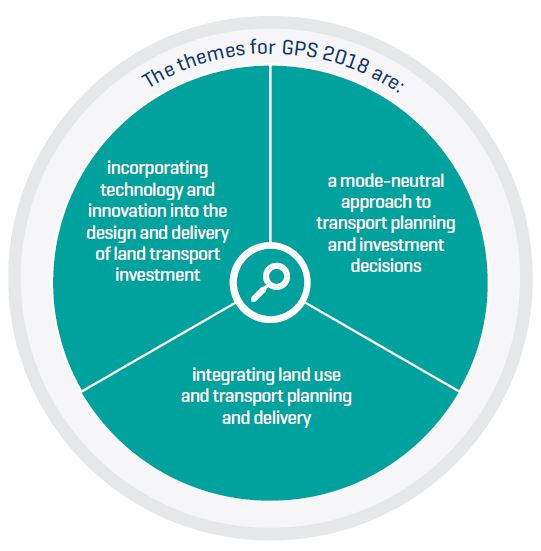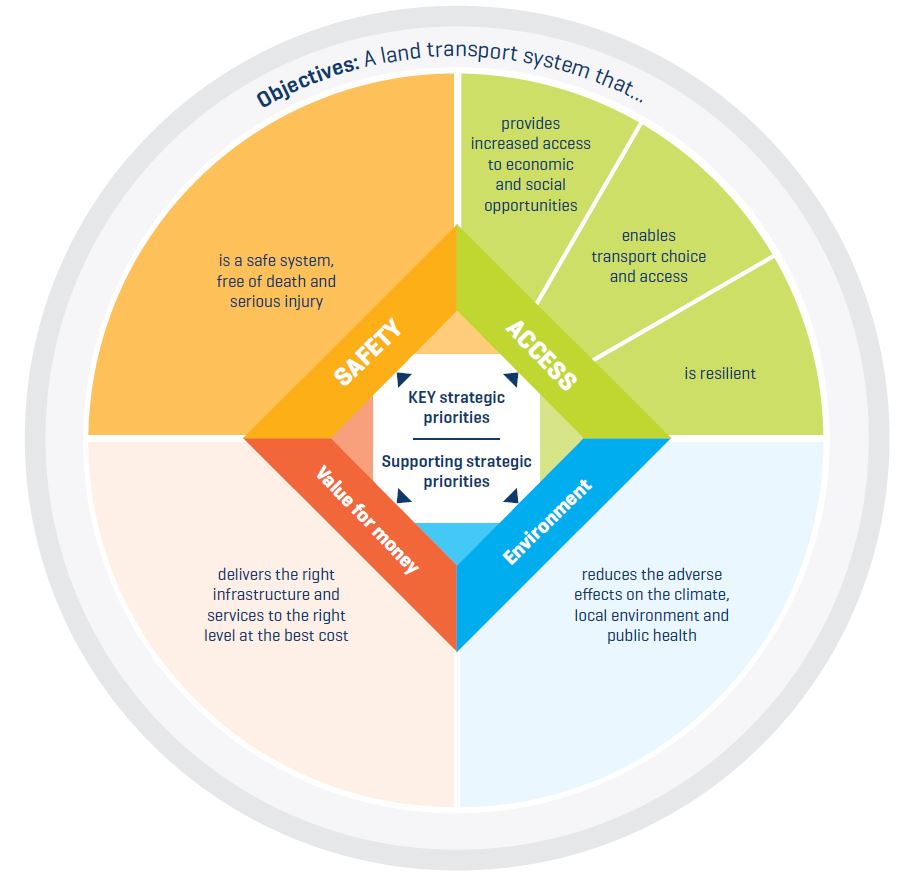 We’ve heard lots of cycle-friendly murmurings from the new Government since they came into power. But as the saying goes, that all counts for naught until you “show me the money”. That has now happened with the release of the draft Govt Policy Statement (GPS) on Land Transport, out for consultation. This is the key government document that sets out their intentions and policies regarding land transport (road, rail, active modes) on the country over the coming decade. Included in this is an indication of how much money is expected to be allocated across the various land transport activity classes.
We’ve heard lots of cycle-friendly murmurings from the new Government since they came into power. But as the saying goes, that all counts for naught until you “show me the money”. That has now happened with the release of the draft Govt Policy Statement (GPS) on Land Transport, out for consultation. This is the key government document that sets out their intentions and policies regarding land transport (road, rail, active modes) on the country over the coming decade. Included in this is an indication of how much money is expected to be allocated across the various land transport activity classes.
When it comes to cycling, there is a lot to like about the draft GPS. First up, the ramp up in funding that the previous Govt started with the Urban Cycleways Fund continues, with potentially up to $360 million on offer for “walking and cycling improvements” over the next three years (it should be noted that this GPS also looks like greatly improving the lot for walking as well).
What really sets this GPS apart from previous versions is what it actually says about cycling in terms of policy. For example:
- “In the past, the design of both urban and rural roads has often prioritised the faster movement of vehicles over the safety of people, particularly vulnerable road users like people walking and cycling. Urban cycleway networks are significantly underdeveloped so the transport system is comparatively less safe for people on bikes. Further investment in cycleways and footpaths would support safe and healthy travelling options for cyclists and pedestrians.”
- “Investment in the provision of appropriately designed and maintained infrastructure (e.g cycleways) and speed management is particularly important to increase access to and uptake of active forms of travel. Investment in promotional activities to encourage uptake and community engagement is also supported.”
- “GPS 2018 supports policy development in key areas, including: ensuring safer and appropriate speeds, including around schools; improving the safety of active transport modes, including rules for what types of vehicles should be allowed on footpaths, cycleways, shared paths and roadways, and under what conditions”
- “Investing for improved access is guided by considerations of: …land use and transport planning that reduces the need for single-occupant vehicle travel in urban centres”
- “GPS 2018 is supportive of liveable cities by improving walking, cycling and public transport and by increasing transport choice“
- “Walking and cycling and public transport are very important in supporting an efficient, sustainable and affordable transport system. Enabling more people to use active modes and public transport can also contribute to improved health outcomes as people regularly incorporate active travel into their daily life, increasing levels of physical activity.”
- “The Government will investigate any regulatory barriers to the uptake and delivery of public transport, walking and cycling in New Zealand.”
Basically, you get a strong impression that this Govt is doing more than just paying lip service to encouraging modes like cycling while still focusing mostly on building motorways (it has to be said that the planned expenditure in this GPS still has a large proportion being spent on roading, but a lot more is being focused on local roads and road safety).
The draft GPS explicitly supports investment in:
- provision of good quality, safe, fit-for-purpose walking and cycling infrastructure
- education, promotion, and where necessary regulation, to improve the real and perceived safety of cyclists and pedestrians
- funding for maintenance of walking and cycling infrastructure
- extending dedicated cycle networks in urban areas to complete them
- delivering critical missing urban cycling links in areas of high demand (Auckland’s SkyPath and the Wellington – Lower Hutt link are mentioned; what about getting the Coastal Pathway completed?)
- continued development of the NZ Cycle Trail network, including Great Rides and the connecting Heartland Routes
- projects focused on increasing the uptake of children using safe and active travel, especially to and from school.
All of this basically reflects the increased focus in this GPS to Safety and Access. As you might have heard in recent news pronouncements, the Govt is very serious about reducing the growing road death/casualty figures and looking at “Vision Zero” approaches to doing this. They’re also keen to improve people’s ability to connect with other people, goods, services and
opportunities – and that doesn’t mean focusing on how to improve journeys made by single-occupant cars and trucks.
All up, the draft GPS sounds very promising; the challenge as always is to work out how to implement it in a prompt and reasonable manner. Submissions on this draft are currently open and you have until 5pm Wed 2nd May to have your say. The Govt will then finalise the GPS (and NZTA and local councils can finalise their planned expenditure) and get on with doing it…
What do you think of the draft GPS?



